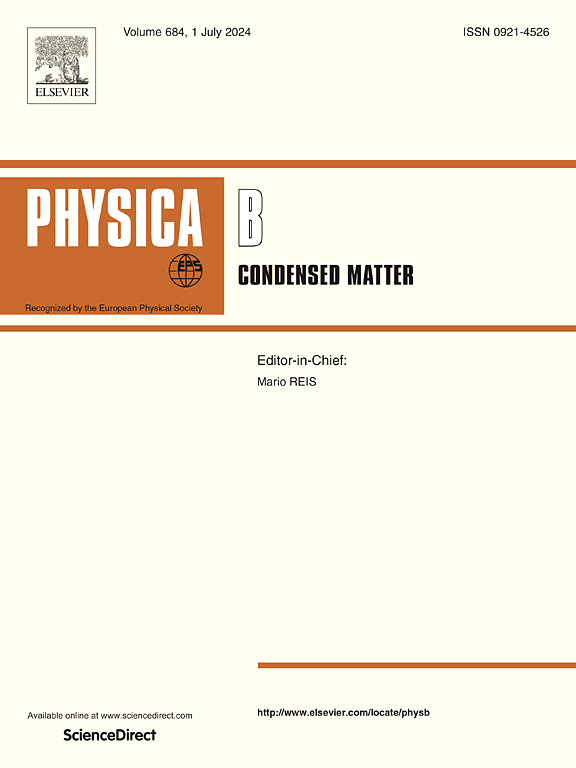Unveiling the role of preheating temperatures on structural, morphological, and optoelectronic properties in CeO2 thin films
IF 2.8
3区 物理与天体物理
Q2 PHYSICS, CONDENSED MATTER
引用次数: 0
Abstract
This study investigates cerium oxide thin films deposited on glass substrates using the sol-gel spin coating method, focusing on the effects of varying preheating temperatures. X-ray diffraction and Raman analysis confirms cubic crystal structure and characteristic F2g mode respectively. Scanning Electron Microscopy (SEM) and Atomic Force Microscopy (AFM) analysis demonstrate enhanced surface uniformity and smoothness with preheating temperatures from 200 °C to 300 °C. The films exhibit high optical transparency with slight variation in energy gaps (3.54–3.60 eV), and reduced Urbach energy with increase in preheating temperature. Density functional calculations were used to align band gap values with experimental findings and provide insights into the orbital contributions. Photoluminescence spectra reveal emission peaks between 350 and 500 nm, with peak intensities decreasing at higher preheating temperatures. These results demonstrate that adjusting preheating temperatures can effectively tailor the properties of cerium oxide thin films for applications requiring precise defect engineering.
求助全文
约1分钟内获得全文
求助全文
来源期刊

Physica B-condensed Matter
物理-物理:凝聚态物理
CiteScore
4.90
自引率
7.10%
发文量
703
审稿时长
44 days
期刊介绍:
Physica B: Condensed Matter comprises all condensed matter and material physics that involve theoretical, computational and experimental work.
Papers should contain further developments and a proper discussion on the physics of experimental or theoretical results in one of the following areas:
-Magnetism
-Materials physics
-Nanostructures and nanomaterials
-Optics and optical materials
-Quantum materials
-Semiconductors
-Strongly correlated systems
-Superconductivity
-Surfaces and interfaces
 求助内容:
求助内容: 应助结果提醒方式:
应助结果提醒方式:


